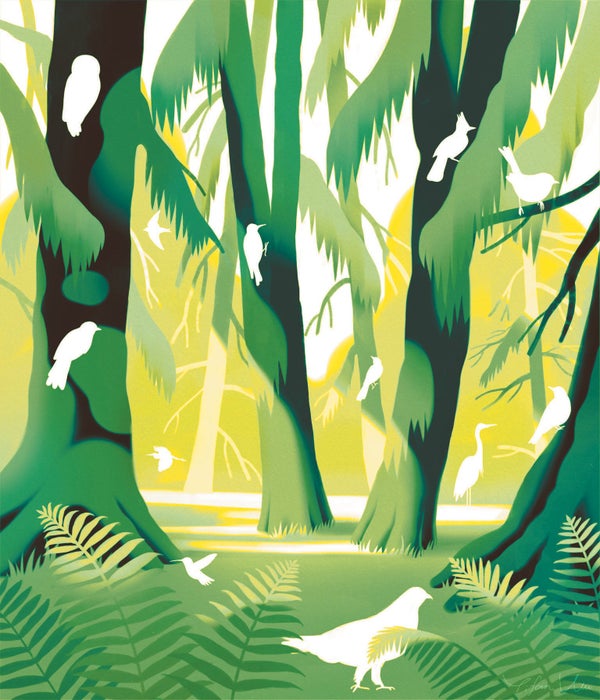Rachel Carson’s classic best seller about ecological threats, Silent Spring, started a wave of American environmentalism. It played a direct role in the 1972 decision by the newly formed U.S. Environmental Protection Agency to ban use of the pesticide DDT. Ernest Gruening, one of the first two U.S. senators from Alaska, said Carson’s writings had “altered the course of history.” It will be 60 years ago this June that the public was introduced to Carson’s arguments, as her book chapters were serialized in the New Yorker magazine. The coming anniversary makes this a good time to consider whether the book achieved one of her major goals: protecting wildlife and, in particular, birds.
Carson took a complex technical subject—the damaging effects of persistent pesticides—and expressed it in one simple, poetic image: a spring in which no birds sang. She asked us to imagine what it would be like to awaken in the morning to a world without these songs. She wrote with grace, and she made us feel the loss. But how well have we acted on Carson’s warnings?
With some exceptions, we haven’t been very successful, and neither have birds. In 2019 a major study, led by Cornell University ornithologist Kenneth V. Rosenberg, showed that 29 percent of North American birds have vanished since 1970. The study was notable because of its sweep: it integrated data across scores of species and the different biomes birds live in, and it used a variety of approaches to validate its counts; an article published by the Audubon Society called the result “a sobering picture” of widespread avian decline. Grasslands were the hardest hit, with a documented loss of more than 700 million breeding individuals—a decline of more than 50 percent. But major declines occurred in every biome save one and in nearly every species. The net toll amounted to nearly three billion individual birds, a figure that sparked a campaign with tips on what people can do to save them. (Top two: add decals to windows and keep cats inside.)
On supporting science journalism
If you're enjoying this article, consider supporting our award-winning journalism by subscribing. By purchasing a subscription you are helping to ensure the future of impactful stories about the discoveries and ideas shaping our world today.
Given these data, it is tempting to conclude that despite the brilliance of her writing, Carson did not succeed in protecting birds. Moreover, the avian decline is part of a tremendous loss of global biodiversity driven by human activity. According to the Intergovernmental Science-Policy Platform on Biodiversity and Ecosystem Services (IPBES), more than 40 percent of amphibian species, almost 33 percent of reef-forming corals and more than a third of all marine mammals are threatened. In all, biologists estimate that more than a million species are at risk. This also endangers human well-being, and the group notes that “we are eroding the very foundations of our economies, livelihoods, food security, health and quality of life worldwide.”
Still, the 2019 bird study, despite its grim results, also suggests that protecting biodiversity (and thereby ourselves) is not a lost cause. One important exception in the otherwise bleak picture its scientists painted is wetlands (and the waterfowl that inhabit them). There bird abundance increased 13 percent. What distinguishes wetlands from other ecological areas? One answer is that wetlands have been especially shielded from excessive industrial activity for a long time. The areas have been under a host of legal protections on the federal, state and tribal level. Some of these laws, such as Massachusetts’s powerful Wetlands Protection Act, prioritized wetlands for their diverse ecological value. Others safeguarded such areas because they are important to navigation and commerce, fisheries, flood control and water supplies. The 1899 Rivers and Harbors Appropriation Act, for instance, secured wetlands as parts of navigable waterways.
The other encouraging exception in the bird study was raptors, a group that includes the majestic bald eagle. Raptor numbers have increased by 15 million individuals. Bald eagles were on the verge of extinction at the time Carson wrote, but they recovered in large part as a result of the ban on DDT. A news story published by the Audubon Society notes that “the numbers show that taking steps like wildlife management, habitat restoration and political action can be effective to save species.” Scientists have documented the current threat to biodiversity. Their data also show that if we act on this information, we can change the outcome.
